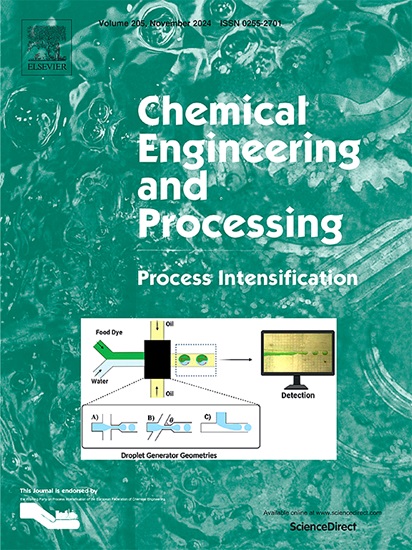Probe into methanol and ethanol mixtures oxidative reforming in gliding arc discharge plasma and kinetic model
IF 3.8
3区 工程技术
Q3 ENERGY & FUELS
Chemical Engineering and Processing - Process Intensification
Pub Date : 2025-01-09
DOI:10.1016/j.cep.2025.110162
引用次数: 0
Abstract
A plasma reactor utilizing gliding arc discharge (GAD) was created for the purpose of partial oxidative reforming (POR) a mixture of methanol and ethanol to produce H2. This study explored that the molar ratio of oxygen to carbon (O/C), the mass ratio of methanol to ethanol, residence time, and input power influenced the POR reaction. With an O/C ratio of 0.5, a methanol-to-ethanol mass ratio of 1:1, an input power of 42 W, and a residence time of 30 s, the energy yield for H2 reached 84.6 LkWh−1, with H2 and CO as the main products. Optical Emission Spectroscopy (OES) was employed to diagnose GAD plasma. A zero-dimensional (0-D) kinetic model was developed, showing good agreement with experimental data. The conversion mechanisms for methanol and ethanol, along with the generation and consumption of products, were thoroughly analyzed. The conversion of methanol and ethanol occurs mainly through H-atom collisions. The main pathway for H2 production originates from the recombination reactions of H· radicals with hydrocarbons such as CH2·, CH4, C2H3·, and C2H6.

求助全文
约1分钟内获得全文
求助全文
来源期刊
CiteScore
7.80
自引率
9.30%
发文量
408
审稿时长
49 days
期刊介绍:
Chemical Engineering and Processing: Process Intensification is intended for practicing researchers in industry and academia, working in the field of Process Engineering and related to the subject of Process Intensification.Articles published in the Journal demonstrate how novel discoveries, developments and theories in the field of Process Engineering and in particular Process Intensification may be used for analysis and design of innovative equipment and processing methods with substantially improved sustainability, efficiency and environmental performance.

 求助内容:
求助内容: 应助结果提醒方式:
应助结果提醒方式:


